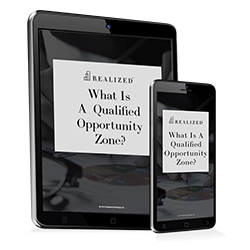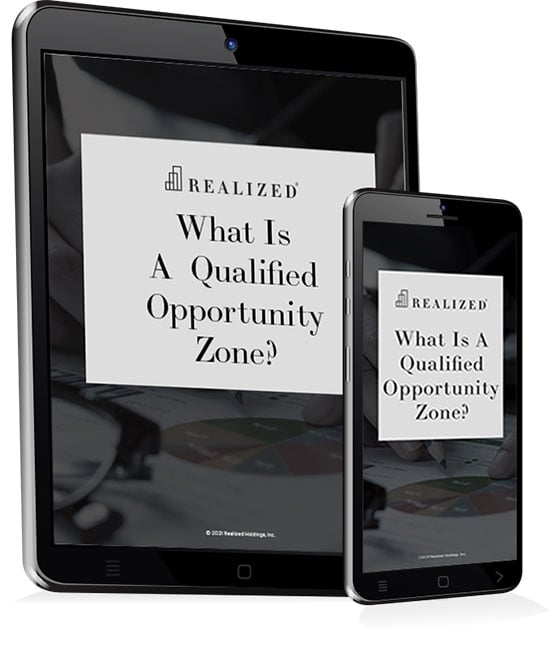
In December 2017, the Opportunity Zones incentive program was introduced as part of the Tax Cuts and Jobs Act. Two years later, the U.S. Department of the Treasury and IRS introduced their third — and final — list of rules focused on owning, developing, and operating within federally designated Qualified Opportunity Zones (QOZs). The goal of December 2019 guidance was to combine the first two tranches -- issued in October 2018 and May 2019.
The new information spans 544 pages, and clarifies issues about Qualified Opportunity Funds (QOFs), affordable housing investments in OZs, Qualified Opportunity Zone Business Property (QOZBP), and Qualified Opportunity Zone Businesses (QOZB).
All of the above are important, and will be touched on in future blogs. This particular article, however, will focus on the treatment of gains from the disposal of a 1231 asset.
What Is A 1231 Property?
A 1231 property is defined by the Internal Revenue Code’s section 1231 as real or depreciable business property that is held for longer than one year. The category of assets qualifying under the 1231 rules is broad. It includes everything from leaseholds, to depreciable real or personal property, to crops and cattle, to coal, iron ore, or timber.
The challenge of selling a 1231 asset is how to recognize a gain or loss on that sale. If, for example, you sell a depreciable apartment building after a two-year hold, and end up with a loss, the loss can be deducted against your income.
If, however, you sell your apartment building for a profit, that extra is recognized, and taxed, as a capital gain. With that gain in hand, you might be thinking, “Wow! I’m going to invest that gain into the nearest Qualified Opportunity Fund, and defer taxes on that profit until 2026!”
But . . . not so fast.
Unlike the sale of an ordinary capital asset (i.e., one that isn’t depreciable), 1231 assets undergo a complex netting process that focuses on causality gains and losses on the asset, as well as ordinary losses you might have taken on that asset over the past five years. Any losses that occur are then applied to the gain on the sale of your building. Say your apartment building sells for $10 million, but the netting process comes up with a $2 million loss. This means your actual recognized gain would be $8 million.
“So?” you might be thinking. “No big deal. I’ll put that $8 million into a QOF and defer my taxes on that gain.” Again, however, there is an issue. Because of the netting process and its timing, you’ll have to wait until the end of the year to know exactly what your gain will be. This isn’t a problem if you are resigned to being taxed on your capital gain. It is a problem, however, if you want to invest in a QOF. There is a 180-day window, following the sale of your asset, to invest in the fund. If that 1231 property sells in February, you would have to wait until December to know the exact amount of your profit, well beyond that six-month window.
That is, until the new guidance was released.
The New QOZ 1231 Guidance
Under the new rules, if you sell your 1231 apartment building in early January, you can immediately take that $10 million gain, invest it in a QOF, and benefit from the tax deferral component of the program. This is because, in a sense, each Section 1231 gain stands on its own, without being tied to any 1231 losses that occur.
But what if the netting process leads to a Section 1231 loss for the year? Well, remember that any 1231 loss is 100% deductible against your income. This still holds true, even after you invest your original gain in the QOF; that loss would be characterized as ordinary income.
There is even better news from the updated guidance. It was mentioned above that the netting process means you must recapture any net Section 1231 losses from the previous five years as ordinary income. However, if you invest in a QOF in 2020, your 1231 gain will be deferred until 2026. As a result, that 1231 gain will be outside of the five-year recapture window.
In short, if you sell your 1231 asset, you don’t need to wait until the end of the year to defer any gain from that sale into a QOF. You don’t have to wait and see about any losses that might offset the gain. You can invest your profit into a QOF immediately.
This material is for general information and educational purposes only. Information is based on data gathered from what we believe are reliable sources. It is not guaranteed as to accuracy, does not purport to be complete and is subject to change.
Realized does not offer legal or tax advice. As such, this information should not be used as a substitute for consultation with professional accounting, tax, legal or other competent advisers. Before making any decision or taking any action, you should consult with a qualified professional.



